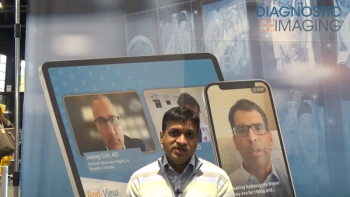
Data Backs CT Lung Screening in More High-Risk Patients
NCCN Group 2 high-risk patients to benefit from CT lung screening, study says.
A retrospective review of an additional group of patients at high-risk for lung cancer - or National Comprehensive Cancer Network Group 2 patients - showed that annual lung screening had similar rates of positivity and lung cancer diagnoses in these patients as those seen in patients in the National Lung Screening Trial (NLST).
“Similar initial clinical CT lung screening results between the NLST population and NCCN high-risk Group 2 suggests it may be possible to save thousands of additional lives each year by allowing Group 2 individuals to enroll in CT lung screening programs,” study author Brady J. McKee, MD, of the department of radiology at Lahey Hospital and Medical Center, told Diagnostic Imaging. “We recommend CMS provide ‘coverage with evidence’ for Group 2, as is being requested by the national multi-stakeholder coalition currently providing evidence to CMS as part of the National Coverage Determination process.”[[{"type":"media","view_mode":"media_crop","fid":"28098","attributes":{"alt":"","class":"media-image media-image-right","id":"media_crop_85319305956","media_crop_h":"0","media_crop_image_style":"-1","media_crop_instance":"2810","media_crop_rotate":"0","media_crop_scale_h":"0","media_crop_scale_w":"0","media_crop_w":"0","media_crop_x":"0","media_crop_y":"0","style":"height: 238px; width: 166px; border-width: 0px; border-style: solid; margin: 1px; float: right;","title":"Brady J. McKee, MD, study author","typeof":"foaf:Image"}}]]
Based on results of the NLST, annual CT screening is currently recommended in patients aged 55 to 74 with a 30 pack-year or greater smoking history or current or former smokers who quit within the past 15 years. The NCCN Group 2 is patients aged 50 or older with a greater than 20 pack-year smoking history, current or former smokers who quit for any length of time, and those with at least one additional lung cancer risk factor, excluding second hand smoke exposure.
The study by McKee and colleagues, published in the
“Despite statistically significant differences in age, smoking history, and duration of smoking cessation between NCCN Group 2 and Group 1 (the NLST population) the positive test and cancer detection rates for both groups were similar,” McKee said.
Results of the imaging examination showed positive results, clinically significant incidental findings, and suspected pulmonary infection in 25%, 6%, and 6% of patients in group 2 and 28.2%, 6.2% and 6.6% in group 1, respectively.
“In our program, for every three NLST high-risk individuals screened, we screened one from NCCN Group 2. Applying a similar ratio nationwide would yield 2 million Americans in Group 2,” McKee said. “Should CT lung screening generate a Group 2 mortality benefit similar to the NLST we could save thousands of additional lives each year by including Group 2 in clinical CT lung screening programs.”
Newsletter
Stay at the forefront of radiology with the Diagnostic Imaging newsletter, delivering the latest news, clinical insights, and imaging advancements for today’s radiologists.



























